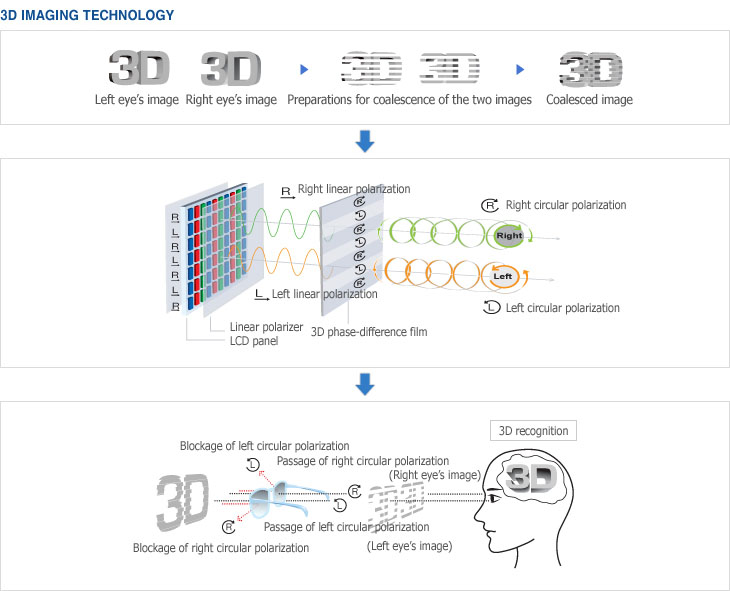

 home
overview
research
resources
outreach & training
outreach & training
visitors center
visitors center
search
search
home
overview
research
resources
outreach & training
outreach & training
visitors center
visitors center
search
search


 home
overview
research
resources
outreach & training
outreach & training
visitors center
visitors center
search
search
home
overview
research
resources
outreach & training
outreach & training
visitors center
visitors center
search
search

Stereoscopic Imaging with the Miracube G240M LCD display
Note that the Miracube product line has been discontinuted. See our NVIDIA 3D Vision technology note for a cost-effective alternative stereoscopic display system.
Introduction
Stereoscopic imaging is of particular interest in molecular modeling applications because the structural models under consideration often have components with complex spatial relationships that are difficult to discern when viewing on a 2D display. Older CRT displays could readily be augmented with liquid crystal shutter glasses for viewing in stereo, but until recently flat-panel LCD displays were limited to 2D viewing only.
Product
The Miracube G240M, first introduced in 2008, is a 24" 1920x1200 pixel resolution LCD display that can be switched into stereo 3D display mode for viewing with passive stereo glasses. To display the left and right eye images at the same time, the G240M puts the images on alternate rows of the display, thus producing a horizontally interlaced image. Each image has a resolution of 1920x600 pixels. The same basic technique is also used in the Zalman and Hyundai displays (and probably others). The Miracube is quite flexible in that it accepts stereoscopic images in any of four formats: interlaced, frame sequential, sub-field, and side-field. In this respect it is one of the more flexible LCD stereo displays available. The entire screen may be used to display stereo images, or the 3D images can be displayed just within a window. The G240M display is manufactured by Pavonine Korea Inc. and sold in the USA by Miracube Inc. MRSP is US$4500. Two sets of polarized glasses are supplied with the G240M. Miracube also sells a 46" version of this display.
The diagram below (from the Zalman web site) illustrates how 3D viewing is achieved in the Miracube and similar LCD displays:

Evaluation
We tested the Miracube G240M with UCSF Chimera and two workstation-class graphics cards that have built-in stereo viewing capability along with two less expensive graphics cards. These later cards require the application software be modified to produce row-interlaced left and right eye images. For Chimera, you must use version 1.4 or later.
Graphics Card Miracube Mode Chimera "Camera" Mode ATI FireGL 7600
Enable “Quad Buffer Stereo” and
“Auto-Stereo (Horizontal Interleaved)” stereo mode.Interlaced Sequential Stereo NVidia Quadro 980 XGL
Set “Enable stereo” to “On.”
Set “Stereo display mode” to “Use shutter glasses.”Frame Sequential Sequential Stereo NVidia GeForce and ATI Radeon
Default driver settings.Interlaced Row-interlaced Stereo The main advantage of the Miracube G240M is that it can convert, using built-in hardware, several types of stereo signals to its native horizontally interlaced display format. In particular, it can accept frame sequential left and right images that workstation-class graphics cards such as the FireGL 7600 and Quadro 980 XGL produce. It can also accept fullscreen top/bottom left and right eye images that older SGI workstations produce, and it can accept fullscreen, side-by-side left and right eye images like those made for a stereoscope.
Results
The Miracube display produces images that have a very good three-dimensional effect. Users have the sense that the model is "floating in space" in front of the display and the temptation is to reach out and grab it. The stereo effect is maintained over a reasonably wide viewing angle, although if the viewer is too far off axis either vertically or horizontally image ghosting is apparent. The contrast ratio is excellent.
Unlike a CRT with frame sequential, or time multiplexed stereo, text displayed in 3D on an interlaced display is difficult to read. This is a natural result of the horizontally interlaced images. One way to partially overcome this limitation is to treat the stereo glasses as bifocals and peer over the top of the lens when reading text.
The FireGL and Quadro graphics cards provided the best results because of their support for quad-buffering (two display buffers for each eye). Quad-buffering reduces artifacts that occasionally can be seen when the previously rendered frame is combined part way down the screen with the subsequently rendered frame. In practice this was not a significant problem.
The GeForce and Radeon graphics cards performed well as long as Chimera's "silhouette edges" feature was not enabled. (Silhouette edges interfere with Chimera's method of interlacing the left and right eye images.) These types of graphics cards are found in most desktop and laptop computers today because they cost considerably less than either the FireGL or Quadro cards.
Recommendation
The Miracube G240M provides high quality 3D images on a 24" display with good color contrast and viewing angles. It is an good solution for environments using workstation-class graphics cards or running a variety of software applications that produce stereo images in different formats. However, it is quite expensive compared to the newer 120Hz LCD monitors and active stereo glasses combination that are now available and should probably only be considered if you need a montior that can work with several types of stereo input signals. See our nVidia 3D Vision tech note for additional information.
About Us | Research | Outreach & Training | Available Resources | Visitors Center | Search